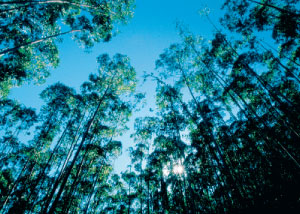 |


|
Today, a majority of the energy Bunge uses in Brazil comes from biomass, such as woodchips, rice hulls, sugarcane bagasse, wood from reforesting projects and wood certified by authorized environmental agencies. Bunge grows eucalyptus trees to help fuel its operations. By expanding our reforestation operations annually, we aim to achieve self-sufficiency in renewable source biomass for our Brazilian operations by 2012.
|
|
Our global measurement framework will include environmental indicators developed by the Global Reporting Initiative (GRI). Some of the environmental performance measures currently in use can be found in the Environmental Performance section, which starts on the next page.
TRAINING
Our training in environmental best practices and responsibility takes many forms, including formal classroom sessions and hands-on training for employees throughout our operations. Topics of instruction include the prevention of oil spills and chemical releases, accident response, composting
and odor and sound control.
COMMUNICATION
As part of the company's Productivity, Quality,
Safety and Environment (PQSE) initiative, Bunge's environmental leadership group meets regularly as it works to standardize the company's environmental management system. Through ongoing cross-company sharing of best practices and progressive environmental protection techniques, the group is leading Bunge's effort to consistently improve and regularly measure our environmental performance.

Bunge is exploring ways to implement environmental best practices in our operations around the world. For example, the San Jerónimo Sud Industrial Complex in Argentina uses composting and land farming to treat organic waste. In the composting process, microorganisms and worms in lombriculture beds naturally transform compost into fertile soil that is used in a vegetable garden.
|
|